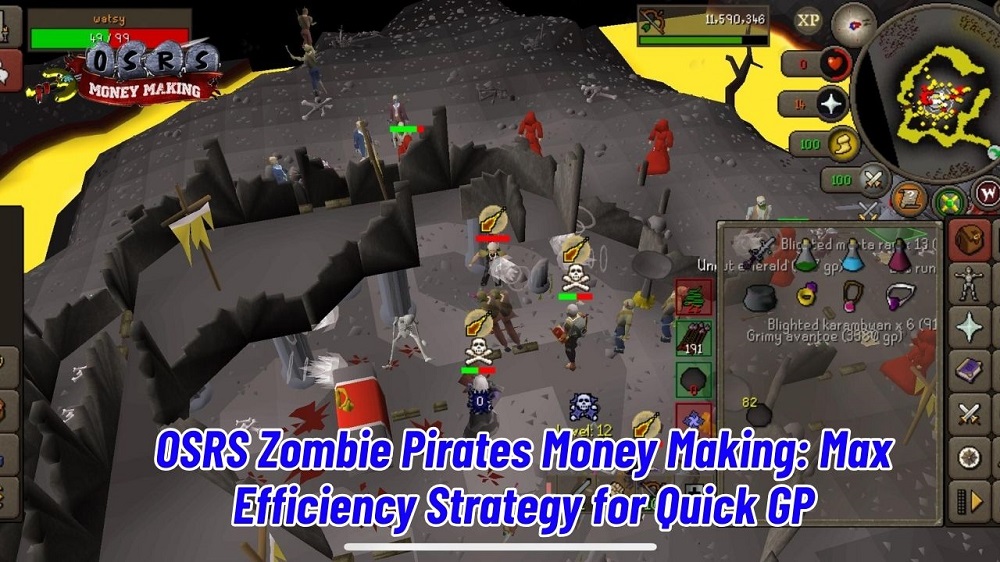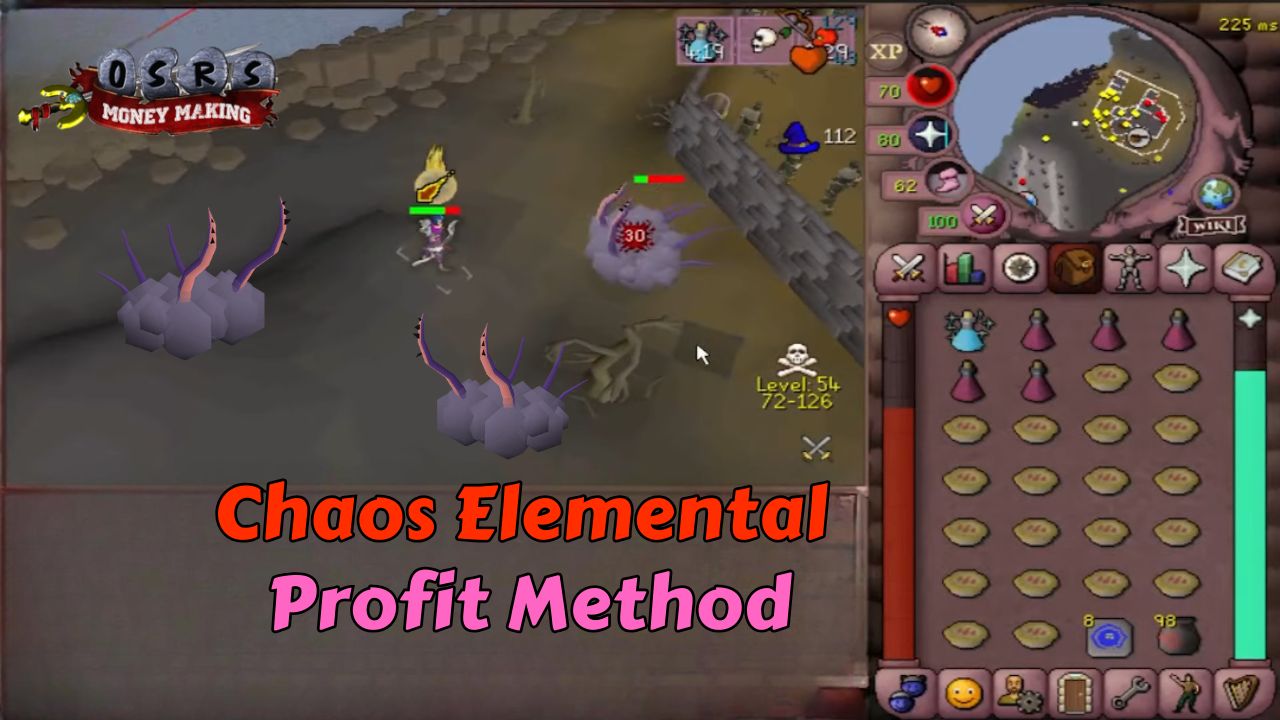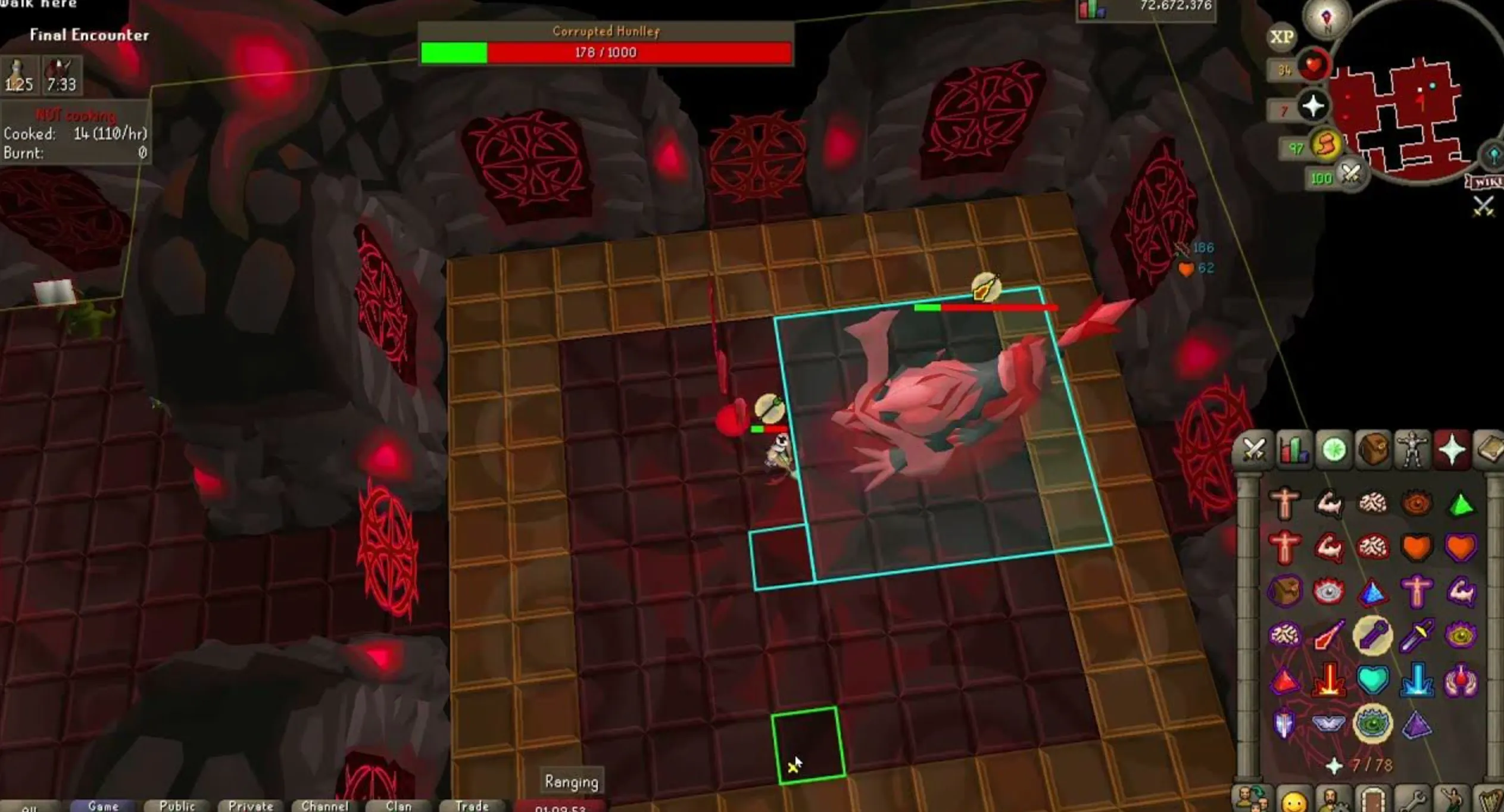Your cart is empty
Cleaning grimy guam leaves

Introduction to Cleaning Grimy Guam Leaves
In the vast world of Old School RuneScape (OSRS), players are always on the lookout for reliable and straightforward methods to earn gold pieces (GP). One such method, often overlooked by seasoned adventurers, is cleaning grimy guam leaves. This simple yet effective money-making technique involves taking grimy guam leaves, which are unprocessed herbs dropped by monsters or gathered through various means, and cleaning them to produce clean guam leaves that can be sold for a profit on the Grand Exchange. Ideal for low-level players or those seeking a low-effort income stream, this method requires minimal investment and skill, making it accessible to nearly everyone in Gielinor. Whether you’re a new player looking to fund your first set of armor or a veteran seeking a passive income source, cleaning grimy guam leaves offers a steady, albeit modest, return with the right approach.
Requirements
To start cleaning grimy guam leaves and turn a profit, you’ll need to meet a few basic requirements. While this method is beginner-friendly, having the right setup can make the process smoother and more efficient. Below are the key requirements:
- Herblore Level: You need at least level 3 Herblore to clean grimy guam leaves. This is easily achievable by cleaning a handful of other low-level herbs or completing a quick Herblore-related task like the Druidic Ritual quest, which grants enough experience to reach this level.
- Grimy Guam Leaves: The core item for this method, these can be obtained through combat, farming, or purchasing from the Grand Exchange.
- Initial Capital: While not strictly necessary if you gather the herbs yourself, having a small amount of GP (around 50K-100K) to buy grimy guam leaves in bulk can kickstart your money-making process.
- Inventory Space: A standard inventory of 28 slots is sufficient, though access to a bank is essential for storing and managing large quantities of herbs.
- Optional Membership: While free-to-play (F2P) players can technically participate by obtaining grimy guam leaves through drops, this method is far more viable for members due to better access to herb sources and higher monster drop rates.
No special equipment or tools are required beyond what’s already available in the game, making this an incredibly low-barrier method. For players just starting out, reaching level 3 Herblore is the only real hurdle, but it’s a minor one that can be cleared in minutes.
Obtaining Grimy Guam Leaves
The success of this money-making method hinges on acquiring grimy guam leaves efficiently and at a low cost. Fortunately, OSRS offers several ways to obtain these herbs, catering to different playstyles and account types. Here’s how you can get your hands on them:
- Monster Drops: Grimy guam leaves are commonly dropped by low-level monsters such as goblins, men/women (found in Lumbridge or Edgeville), and chaos druids. Chaos druids, located in the Edgeville Dungeon or Taverley Dungeon, are particularly popular due to their frequent herb drops, including guam leaves. These monsters are ideal for low-to-mid-level players with combat stats in the 20-40 range.
- Farming: If you have at least level 9 Farming, you can grow guam leaves yourself using guam seeds. Herb patches are available in locations like Catherby, Ardougne, and the Farming Guild. This method requires time and some initial investment in seeds (typically 1K-2K GP each), but it can provide a steady supply of grimy guam leaves with no ongoing cost beyond compost or ultracompost.
- Grand Exchange Purchase: For those who prefer speed over self-sufficiency, buying grimy guam leaves directly from the Grand Exchange is the fastest option. Prices fluctuate, but they typically range between 100-200 GP each, depending on market demand. This approach is best for players with some starting capital who want to process large volumes quickly.
- Slayer Tasks: If you’re training Slayer, certain low-level tasks (e.g., killing cave crawlers or banshees) may yield grimy guam leaves as drops. This is a passive way to gather them while pursuing other goals.
Each method has its trade-offs. Combat and Slayer suit players who enjoy fighting, Farming appeals to those who like long-term investments, and Grand Exchange purchases are perfect for those prioritizing efficiency. A hybrid approach combining drops with occasional bulk buys often works best for consistent supply.
Cleaning Process
Once you’ve gathered your grimy guam leaves, the cleaning process itself is straightforward and requires little more than a few clicks. Here’s a step-by-step breakdown of how it works:
- Acquire Grimy Guam Leaves: Ensure your inventory contains the grimy guam leaves you’ve collected or purchased. You can clean up to 28 at a time per inventory, assuming no other items are present.
- Check Herblore Level: Confirm you’re at least level 3 Herblore. If not, clean a few other low-tier herbs (like grimy marrentill) or complete Druidic Ritual to reach this threshold.
- Clean the Herbs: Left-click each grimy guam leaf in your inventory. This action cleans it, turning it into a clean guam leaf and granting 2.5 Herblore experience per herb. There’s no chance of failure, so every click results in a clean herb.
- Repeat: Continue clicking through your inventory until all grimy guam leaves are cleaned. With a full inventory of 28, this takes about 15-20 seconds depending on your clicking speed.
- Bank and Restock: Once your inventory is full of clean guam leaves, deposit them in a bank (e.g., at Varrock or Falador) and withdraw more grimy guam leaves to repeat the process.
The process is repetitive but mindless, making it a great activity to do while watching a video or chatting with friends. There’s no complex strategy involved just click, clean, and bank. For larger-scale operations, consider cleaning thousands of herbs in one sitting to maximize efficiency.
Profit Calculation
The profitability of cleaning grimy guam leaves depends on the difference between the cost of grimy guam leaves and the selling price of clean guam leaves, minus any incidental costs like teleportation or seeds (if farming). Let’s break it down with a sample calculation based on typical Grand Exchange prices as of April 2025:
| Item | Buy Price (GP) | Sell Price (GP) | Profit per Herb (GP) |
|---|---|---|---|
| Grimy Guam Leaf | 150 | – | – |
| Clean Guam Leaf | – | 250 | 100 |
- Per Inventory: Cleaning 28 grimy guam leaves yields 28 clean guam leaves. At a profit of 100 GP per herb, that’s 2.8K GP per inventory.
- Per Hour: Assuming you can clean and bank 100 inventories per hour (a reasonable pace with practice), that’s 2800 clean guam leaves, or 280K GP profit per hour.
- Farming Scenario: If you grow your own guam leaves, the cost drops to nearly zero (just seeds and compost), pushing profit closer to 250 GP per herb, or 700K GP per hour with 100 inventories. However, this assumes you’ve already harvested the herbs, which takes time.
Factors Affecting Profit:
- Market Fluctuations: Prices on the Grand Exchange can shift. If grimy guam leaves rise to 200 GP and clean ones drop to 220 GP, profit shrinks to 20 GP per herb, or 56K GP per hour.
- Volume: Buying or cleaning in bulk (e.g., 10K herbs) can smooth out price swings and increase total earnings.
- Opportunity Cost: Time spent cleaning could be used for higher-profit methods like bossing, but this method’s low risk and simplicity keep it appealing.
For most players, expect profits in the 200K-300K GP per hour range when buying herbs, or up to 500K-700K GP per hour if self-farming. It’s not the most lucrative method, but it’s consistent and requires no combat risk or high skills.
Tips for Efficiency
Maximizing your GP per hour while cleaning grimy guam leaves comes down to streamlining the process and minimizing downtime. Here are some practical tips to boost efficiency:
- Bank Proximity: Use a bank close to a teleport spot, like the Varrock West Bank (near the Varrock Teleport) or the Grand Exchange itself. This reduces travel time between cleaning and restocking.
- Bulk Processing: Buy or gather grimy guam leaves in large quantities (e.g., 5K-10K) to avoid frequent Grand Exchange trips. Store them in your bank and clean in batches.
- Mouse Keys: Enable mouse keys in your OSRS client settings to clean herbs faster. This lets you use the keyboard’s number pad to click, reducing hand strain and speeding up the process.
- Combine with Training: If you’re below level 3 Herblore, start with cheaper grimy herbs (like grimy tarromin) to level up while still making a small profit, then switch to guam leaves.
- Monitor Prices: Use the Grand Exchange tracker or a third-party tool to buy grimy guam leaves when prices dip and sell clean ones when they peak. Even a 20-30 GP difference per herb adds up over thousands of cleans.
- Farming Integration: Plant guam seeds during downtime and harvest them later to supplement your supply. Use ultracompost to maximize yield (typically 6-10 herbs per patch).
- Multi-Task: Clean herbs while waiting for other activities, like Slayer task cooldowns or PvM respawns, to make use of idle time.
Efficiency is key to pushing this method beyond a casual GP trickle into a respectable income stream. With practice, you can clean 120-150 inventories per hour, significantly boosting your hourly rate.
Conclusion
Cleaning grimy guam leaves may not be the flashiest or most profitable money-making method in OSRS, but its simplicity and accessibility make it a gem for certain players. Whether you’re a fresh account looking to scrape together your first 1M GP, a skiller leveling Herblore on a budget, or just someone who enjoys low-effort tasks, this method delivers consistent returns with minimal risk. By gathering herbs through combat, farming, or smart Grand Exchange purchases, and optimizing your cleaning routine, you can turn a humble herb into a steady flow of 200K-700K GP per hour. It’s a reminder that in Gielinor, even the smallest actions like cleaning a grimy leaf can pave the way to wealth, one click at a time. So grab your grimy guam leaves, head to the bank, and start cleaning your coin pouch will thank you.






